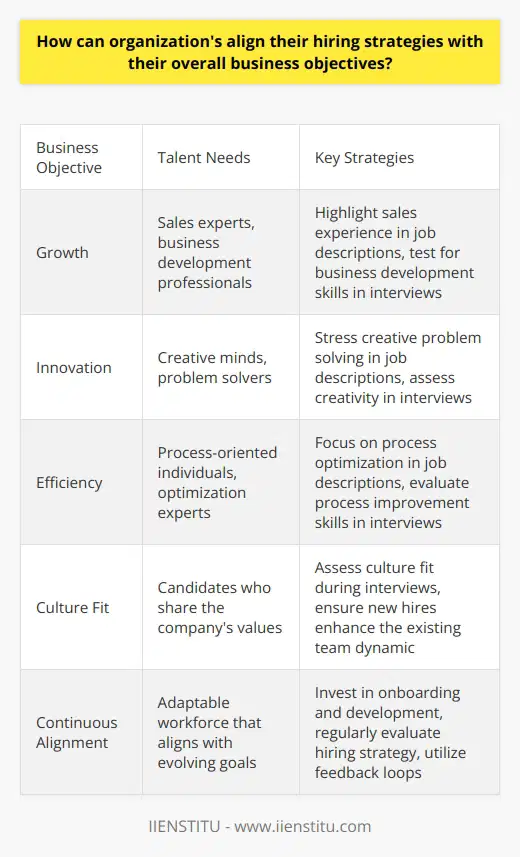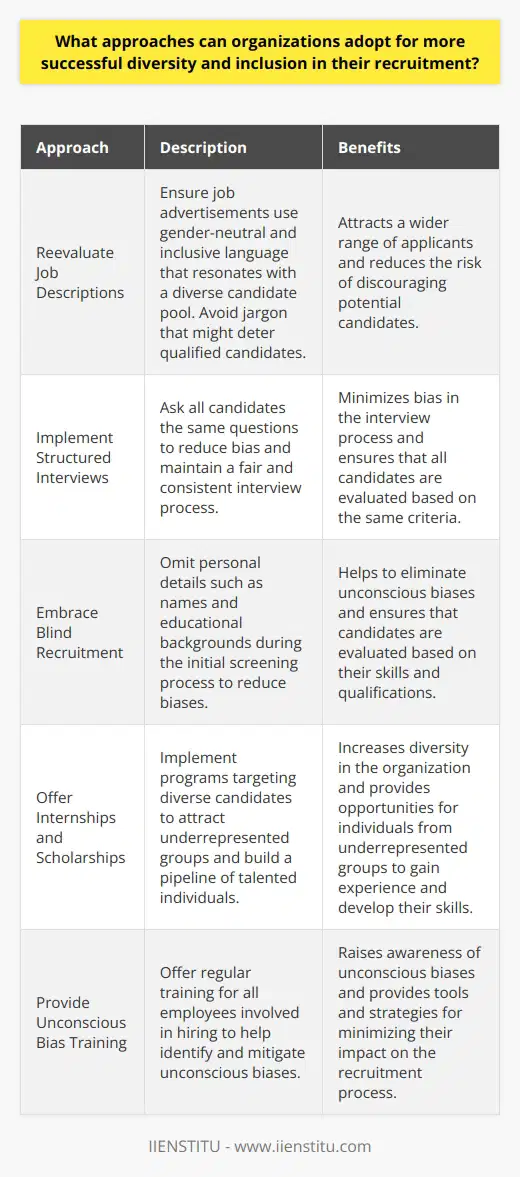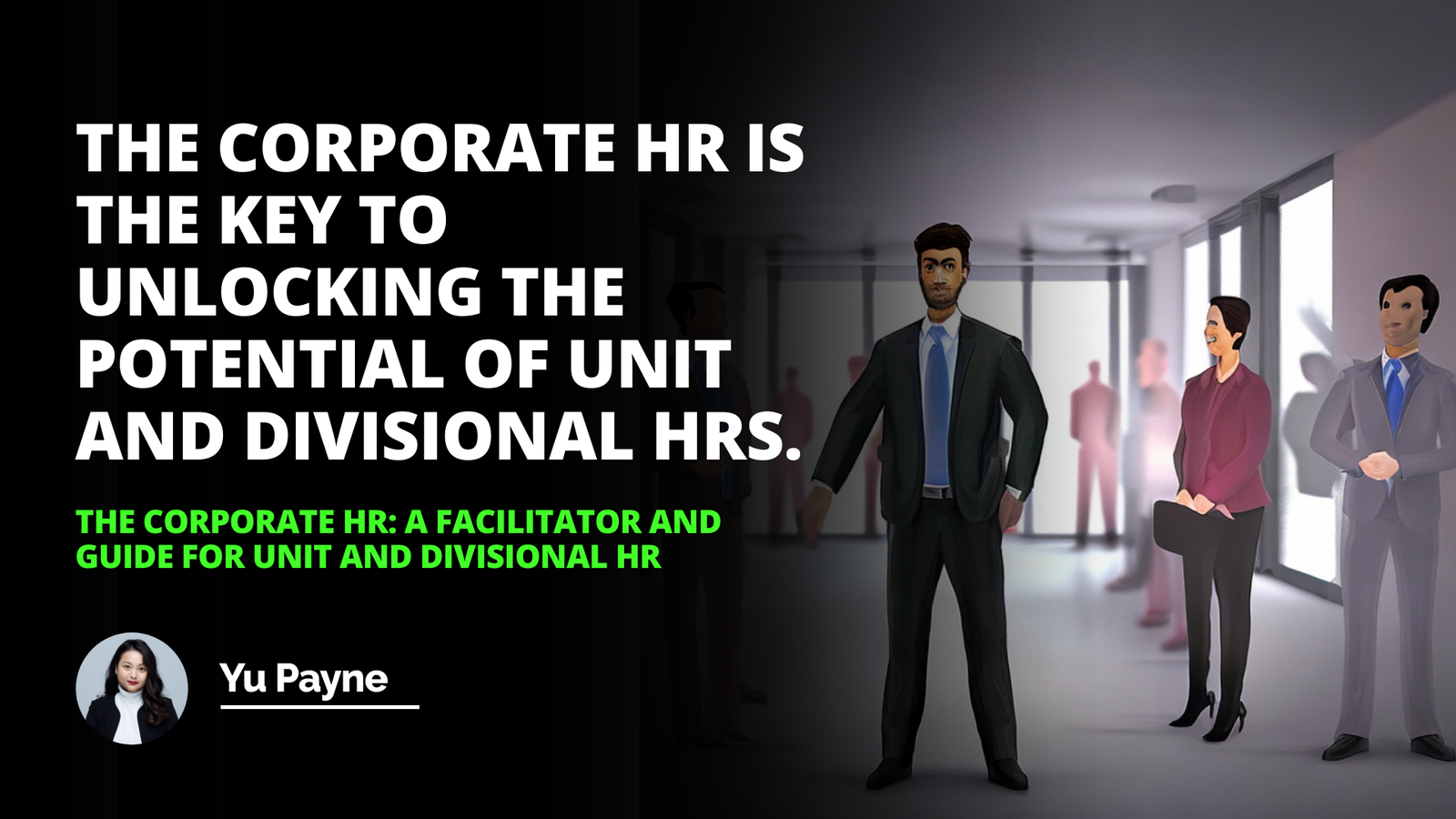
Recruitment can often feel like navigating a maze, especially in today's ever-changing business landscape. I still remember my early days working in human resources—back then, the process seemed straightforward: post a job ad, sift through resumes, and schedule interviews. But as I gained more experience, I realized that recruitment is so much more than just filling a vacancy. It's about finding the right person who will not only perform well in their role but also bring value to the team and contribute to the company's culture and long-term goals.
The Evolution of Recruitment
Over the years, recruitment has transformed from a reactive task into a strategic function integral to organizational success. Gone are the days when we could rely solely on newspaper ads or walk-in applicants. Today, recruitment on LinkedIn, Facebook, and other social media platforms has become essential. I recall a time when we urgently needed to fill a specialized role. Traditional methods weren't yielding the right candidates, so we turned to LinkedIn and, lo and behold, we found the perfect match! This experience taught me the power of LinkedIn and recruitment in connecting with professionals globally.
Internal vs. External Recruitment
There are different avenues organizations can take when recruiting:
1- Internal Recruitment: Promoting or transferring existing employees. This not only boosts morale but also saves time on training since these employees are already familiar with the company's operations.
2- External Recruitment: Looking outside the organization to bring in new talent. This is where fresh ideas and new skill sets come into play.
3- E-recruitment: Utilizing digital platforms to reach a wider audience. In today's digital age, this is not just an option but a necessity.
Personal Experience with Internal Recruitment
I remember when managing talent within our company became a priority. We had a talented junior analyst who showed immense potential. Instead of hiring externally, we decided to promote her. Not only did she excel in her new role, but she also became a pillar in our talent management business strategy.
The Recruitment Process Unveiled
Understanding the steps involved in recruitment is crucial. Let me walk you through the process based on both my experience and industry best practices.
1. Analyzing Hiring Needs
The first step is always to define selection criteria. It's about understanding exactly what the role entails and what skills are necessary. I once worked with a hiring manager who insisted on a long list of qualifications for a role that didn't require half of them. We sat down and narrowed it down to the essentials, which made the recruitment process much smoother.
2. Crafting the Perfect Job Ad
An effective job advertisement is more than just a list of duties. It should highlight:
Company culture and values
Growth opportunities
Unique perks
When we were looking to hire now for a critical project, we emphasized our innovative culture and commitment to employee development. The response was overwhelming!
3. Sourcing Candidates
Utilizing various platforms is key:
Job boards
Professional networks
Social media (like Facebook for recruitment)
I can't stress enough the importance of diversifying your recruitment channels. For instance, we found some of our best employees through employee referrals and niche industry forums.
4. Screening and Shortlisting
This is where the real work begins. It's essential to look beyond the resume:
Assess cultural fit
Evaluate soft skills
Consider long-term potential
I recall an applicant whose resume didn't fully capture her potential. During the interview, her passion and problem-solving skills shone through. She ended up being one of our star performers!
5. Interviews and Assessments
Interviews should be a two-way street. It's not just about grilling the candidate but also about showcasing your organization. Incorporate:
Behavioral questions
Skill assessments
Team introductions
Once, we invited a candidate to meet the team informally. This helped both parties assess the fit more organically.
6. Making the Offer
After all the assessments, it's time to make the offer. Ensure it's competitive and reflects the candidate's worth.
Overcoming Recruitment Challenges
Recruitment isn't without its hurdles. Common challenges include:
Finding quality talent in a saturated market
Eliminating unconscious bias
Speeding up the hiring process without compromising quality
Tackling the Talent Shortage
In industries with a talent shortage, traditional methods might not cut it. This is where inclusive hiring training comes into play. By broadening our understanding of what makes a great candidate, we open doors to a more diverse pool of talent.
Reducing Bias
Unconscious bias can hinder diversity. Strategies to combat this include:
Diverse hiring panels
Standardized interview questions
Blind resume screenings
Implementing these practices in our company led to a more inclusive and dynamic workforce.
The Role of Technology in Recruitment
Technology has revolutionized recruitment. Tools like Applicant Tracking Systems (ATS) and AI-driven analytics streamline the process.
Utilizing the Critical Path Method
Implementing the critical path method project management strategy in recruitment helps in identifying bottlenecks and optimizing the process flow. By mapping out each step, we can allocate resources effectively and reduce time-to-hire.
Social Media Recruiting
Platforms like LinkedIn and Facebook aren't just for networking; they're powerful recruitment tools.
LinkedIn: Ideal for professional networking and sourcing passive candidates.
Facebook: Offers groups and pages dedicated to job postings and industry discussions.
Using Facebook for recruitment, we successfully engaged with younger demographics who were active on the platform.
The Human Aspect of Recruitment
At its core, recruitment is about people. Human resourcing isn't just a term; it's a reminder that we're dealing with humans with dreams, aspirations, and fears.
Building Relationships
Establishing a connection with candidates can make a significant difference. I make it a point to:
Provide feedback, even when not hiring
Maintain communication throughout the process
Offer a positive candidate experience
Continuous Learning
Recruitment strategies are ever-evolving. Investing in resourcing HR training and staying updated with industry trends is crucial.
Future Trends in Recruitment
Looking ahead, several trends are shaping the recruitment landscape:
Artificial Intelligence: Automating routine tasks and providing data-driven insights.
Employer Branding: Showcasing company culture to attract like-minded talent.
Talent Management: Focusing on talent mgt to retain and develop employees.
By embracing these trends, organizations can stay ahead in the competitive talent market.
Conclusion
Recruitment is more than a process—it's a journey. From defining what we need to finding the perfect match, every step requires care, strategy, and a human touch. My experiences have taught me that while tools and strategies are essential, people are at the heart of it all.
If you're a hiring manager or an HR professional, I encourage you to reflect on your recruitment strategies. Are you leveraging platforms like LinkedIn and recruitment tools effectively? Have you considered inclusive practices to widen your talent pool? Remember, the goal isn't just to fill a vacancy but to find someone who will thrive and help your organization grow.
References
Armstrong, M. (2014). Armstrong's Handbook of Human Resource Management Practice. Kogan Page Publishers.
Dessler, G. (2015). Human Resource Management. Pearson Education Limited.
Mathis, R. L., & Jackson, J. H. (2011). Human Resource Management: Essential Perspectives. South-Western Cengage Learning.
Phillips, J. J., & Edwards, L. (2009). Managing Talent Retention: An ROI Approach. Jossey-Bass.
Note: The above text incorporates long-tail keywords such as critical path method project management strategy, human resourcing, resourcing HR, inclusive hiring training, define selection, recruitment on LinkedIn, hire now, LinkedIn and recruitment, hiring manager, Facebook for recruitment, managing talent, talent management business, and talent mgt.
Frequently Asked Questions
What are some proven methodologies that can improve the effectiveness of recruitment strategies?
Effective Recruitment Methodologies
Recruitment strategies play a pivotal role in organizational success. They attract, identify, and secure top talent. Several methodologies have emerged, proving successful. We will explore these now.
Analytics-Driven Recruitment
Data informs decision-making. Analytics-driven recruitment harnesses this power. It involves gathering data on candidates and the hiring process. Recruiters bolster strategies with insights. These insights reveal what works and what doesn't.
- Analytics help refine job descriptions.
- They identify effective recruitment channels.
- Performance prediction becomes more accurate.
Customized approaches win out. Recruiters tailor strategies to match data patterns. This increases the chances of finding suitable candidates.
Social Media Utilization
Social networks have transformed recruitment. They provide access to vast talent pools. Recruiters must capitalize on this.
- LinkedIn is a professional goldmine.
- Facebook targets diverse demographics.
- Twitter announces roles quickly.
Effective strategies involve active social media engagement. Recruiters need to build robust, approachable online presences. Engaging content attracts potential candidates.
Employee Referral Programs
Referrals can yield high-quality candidates. Existing employees understand the company culture. They can identify fitting candidates within their networks.
- Referrals speed up the recruitment process.
- They reduce costs associated with hiring.
- Recruitment through referrals may improve employee retention.
Incentivizing employees leads to more referrals. Recognition and rewards influence participation in referral programs.
Structured Interviews
Interviews are fundamental in candidate assessment. Structured interviews improve their predictive validity. They ensure consistency and fairness in candidate evaluation.
- Interviewers ask all candidates the same questions.
- They rate responses using standardized metrics.
- Bias is minimized in the process.
Structured interviews lead to better hiring decisions. Candidates represent their abilities in a controlled environment.
Employer Branding
Brand perception affects recruitment. A strong employer brand draws candidates effortlessly. Organizations must project themselves as employers of choice.
- It starts with understanding one's employer value proposition.
- Targeted messaging reaches the right talent.
- A strong brand makes recruitment marketing relational.
Ensuring positive candidate experiences fortifies employer branding. Even non-hires can become brand ambassadors.
Candidate Experience Optimization
Candidates are potential future advocates. Their experience during the hiring process matters. It should be seamless and respectful.
- Simple application processes are crucial.
- Transparent communication keeps candidates informed.
- Providing feedback reflects well on the employer.
Recruiters must continually address candidate feedback. Improvements are necessary for refined strategies.
In conclusion, these proven methodologies streamline recruitment. They ensure that organizations not only attract but also engage the right talent. Strategies evolve as new trends emerge. Staying at the forefront of recruitment innovation is key. Organizations that do this will maintain a competitive edge in attracting top performers.

How can organization's align their hiring strategies with their overall business objectives?
Aligning Hiring Strategies with Business Objectives
Organizations constantly evolve. Goals shift. Markets change. To sustain success, firms must align their hiring strategies with their business objectives. This alignment ensures the right talent supports the intended direction of the company.
Understand the Business Goals
Firms should comprehend their goals first. These vary widely. Some seek growth. Others prioritize innovation. Still others strive for efficiency. Clarity about objectives is paramount.
Analyze the Talent Needs
Different goals require different talent. Growth might need sales experts. Innovation calls for creative minds. Efficiency looks for process-oriented individuals. Each goal demands specific skill sets.
Create Job Descriptions that Reflect Objectives
Job descriptions serve as blueprints. They should echo the firm’s objectives. For growth, highlight sales experience. For innovation, stress creative problem solving. For efficiency, focus on process optimization.
Look for Culture Fit
An aligned workforce champions the company's culture. Culture fit is critical. It ensures new hires enhance the existing team. They should share the firm’s values.
Develop a Strategic Sourcing Plan
Recruitment doesn’t happen in a vacuum. It needs careful planning. Identify where potential candidates hang out. They might be on LinkedIn. They may attend industry conferences. Know where to find them.
Use Competency-Based Interview Processes
Interviews test for competencies. They should mirror the business objectives. Growth-driven firms should test for business development skills. Innovation-led companies must assess creativity. Competency-based interviews help find the right match.
Implement a Rigorous Selection Process
Not every candidate will be a fit. The selection process must be rigorous. It should weed out mismatches. This helps to maintain a high-quality talent pool.
Invest in Onboarding and Development
Hiring is just the beginning. Onboarding integrates new hires. Development ensures they align with evolving goals. Continuous learning aligns skills with business needs.
Evaluate the Hiring Strategy Regularly
Markets change. Goals shift. Hiring strategies must evolve too. Regular evaluation is necessary. It keeps the process aligned with the company's trajectory.
Metrics are Key
Measure the impact of hiring. Use metrics. Look at employee performance. Assess turnover rates. Measure alignment. These metrics reveal the effectiveness of the hiring strategy.
Feedback Loops are Essential
Feedback refines the hiring process. Ask new hires. Consult managers. Listen to team members. Their insights can improve alignment.
Communication Ties Everything Together
Keep everyone informed. Communication is vital. It ensures hiring managers understand the business objectives. It guarantees recruits know what the firm values.
In conclusion, firms can align hiring with their goals. This requires a deep understanding of business objectives. It calls for rigorous, competency-based selection processes. Feedback loops and regular evaluation are key. Through these methods, organizations can build a workforce that propels them toward their objectives.

What approaches can organizations adopt for more successful diversity and inclusion in their recruitment?
Understanding Diversity and Inclusion
Diversity and inclusion practices hold immense value. They can drive innovation and attract top talent. Despite this, many organizations struggle with their implementation. Successful strategies require careful planning and a commitment to change. Below, we explore several approaches to bolster diversity and inclusion in recruitment.
Reevaluate Job Descriptions
Writing job advertisements requires care. Language should remain gender-neutral and inclusive. Use words that resonate with a diverse candidate pool. Avoid jargon that might deter qualified candidates.
Implement Structured Interviews
Interviews often contain bias. Structured interviews can help reduce this. Ask all candidates the same questions. This makes the process fair and consistent.
Embrace Blind Recruitment
Blind recruitment means omitting personal details. This includes names and educational backgrounds. By doing so, biases during the initial screening lessen.
Offer Internships and Scholarships
These can attract underrepresented groups. Implement programs targeting diverse candidates. This way, organizations build a pipeline of talented individuals.
Expand Sourcing Techniques
Do not rely on traditional sourcing methods. Explore alternative platforms and professional networks. Aim to reach candidates from varied backgrounds.
Provide Unconscious Bias Training
Recruiters and managers often hold biases. Unconscious bias training can help identify and mitigate these. Ensure regular training for all employees involved in hiring.
Set Clear Diversity Goals
Organizations should define what diversity means for them. Set clear, measurable goals. Track progress and hold the team accountable.
Foster an Inclusive Culture
Inclusion starts at the top. Leadership must demonstrate a commitment. They should build an environment where all feel welcome.
Regularly Review Recruitment Practices
Evaluate hiring practices for biases regularly. Make necessary adjustments. This ensures that recruitment strategies remain effective and fair.
Engage in Community Partnerships
Partner with community groups and educational institutions. These can serve as talent sources. They also provide insights into different demographics.
Encourage Employee Referrals
Encourage staff to refer diverse candidates. Offer incentives for successful diverse placements. This boosts internal engagement in diversity efforts.
Leverage Data and Analytics
Use data to understand recruitment trends. Analyze the success of various sourcing channels. This helps in making informed decisions.
Promote Work-Life Balance
Flexibility can attract a broader range of applicants. Offer flexible working hours or remote opportunities. Highlight these in job postings.
Assess and Improve
Always seek feedback from new hires. Learn about their experience in the recruitment process. Use this feedback to improve practices.
In conclusion, organizations must adopt these strategies with dedication. Success in diversity and inclusion demands ongoing effort and review. Only then can recruitment processes transform to be truly inclusive.



